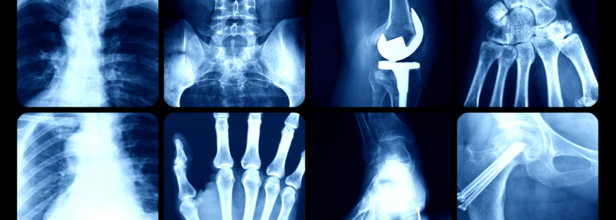
Credits: Canva
You Can Now Get Your X-Ray At Home
Of the many things new, a groundbreaking mobile X-ray service in Devon saved up to 700 hospital beds in three months. This was all possible due to the game changer, mobile X-ray. The service was being trialled at the Derriford Hospital in Plymouth, where patients received X-ray examinations in their own homes, this reduced the need for hospital visits, especially to the vulnerable and elderly patients. This also freed up ambulances and improved overall patient care.
How does it make a difference?
It was originally used in the hospitals itself, with mobile X-ray units being set up within the hospitals for patients under intensive care, who could not be transported to radiology departments. Now, the service has expanded to nursing homes and also to private residences. This is especially beneficial to the frail, elderly or disabled patients who may struggle to visit hospitals.
The BBC reports, Sheila, a 90-year-old care home resident in Devon also benefited from the service after a fall. Instead of an ambulance trip to the hospital, the mobile X-ray team arrived the same day and confirmed a fracture. It also arranged for the appropriate treatment. "It was amazing," said her home manager Diane Kehoe. "It is so fast and has made a huge difference."
How Was It Introduced?
It was in 2024, when around 2,000 patients over the age of 55 visited Derriford's Emergency Department, only to be told that they had not suffered a fracture Of these, around 1,300 arrived via ambulance, and 1,000 were admitted unnecessarily. Mobile X-rays, thus reduce these numbers and provide comfort to patients in a familiar surrounding, which is within their houses.
The University Hospitals Plymouth NHS Trust has received overwhelmingly positive feedback from care homes and patients. The service was initially piloted in Cornwall and is now running in Devon for a 12-month trial.
How Does It Work?
Mobile X-ray services bring imaging technology to patients at home. It also ensures of a quick and precise imaging. It uses digital radiography that captures high resolution images for an accurate diagnosis. Furthermore, it also follows strict ALARA, which stands for As Low As Reasonably Achievable principles to minimize the radiation exposure, The person who receives the imaging at home is at a greater benefit, especially if the patient is vulnerable to diseases, as they can avoid hospital-acquired infections. These images are also transferred to physicians with reports available within 24 hours.
It is capable of diagnosing orthopedic injuries, including fractures, dislocation and bone deformities. It can also diagnose lung conditions like pneumonia, pleural effusion and lung fibrosis; spinal disorders like scoliosis, degenerative disc disease, and abdominal issues like bowel obstruction, kidney stones, and foreign objects.
The procedure usually takes around 10 to 15 minutes and the results too are quickly processed. The best thing is that mobile X-rays also follow pediatric protocols, ensuring safe imaging for children.
While mobile radiography offers clear benefits, such as faster diagnosis, less hospital load, and greater patient comfort, it also has certain disadvantages. These include physical demands on radiographers, logistical planning, and acquiring the necessary approvals. However, the overwhelming positive impact on patients, particularly those with dementia or mobility issues, qualifies it as a significant medical breakthrough.
© 2024 Bennett, Coleman & Company Limited

